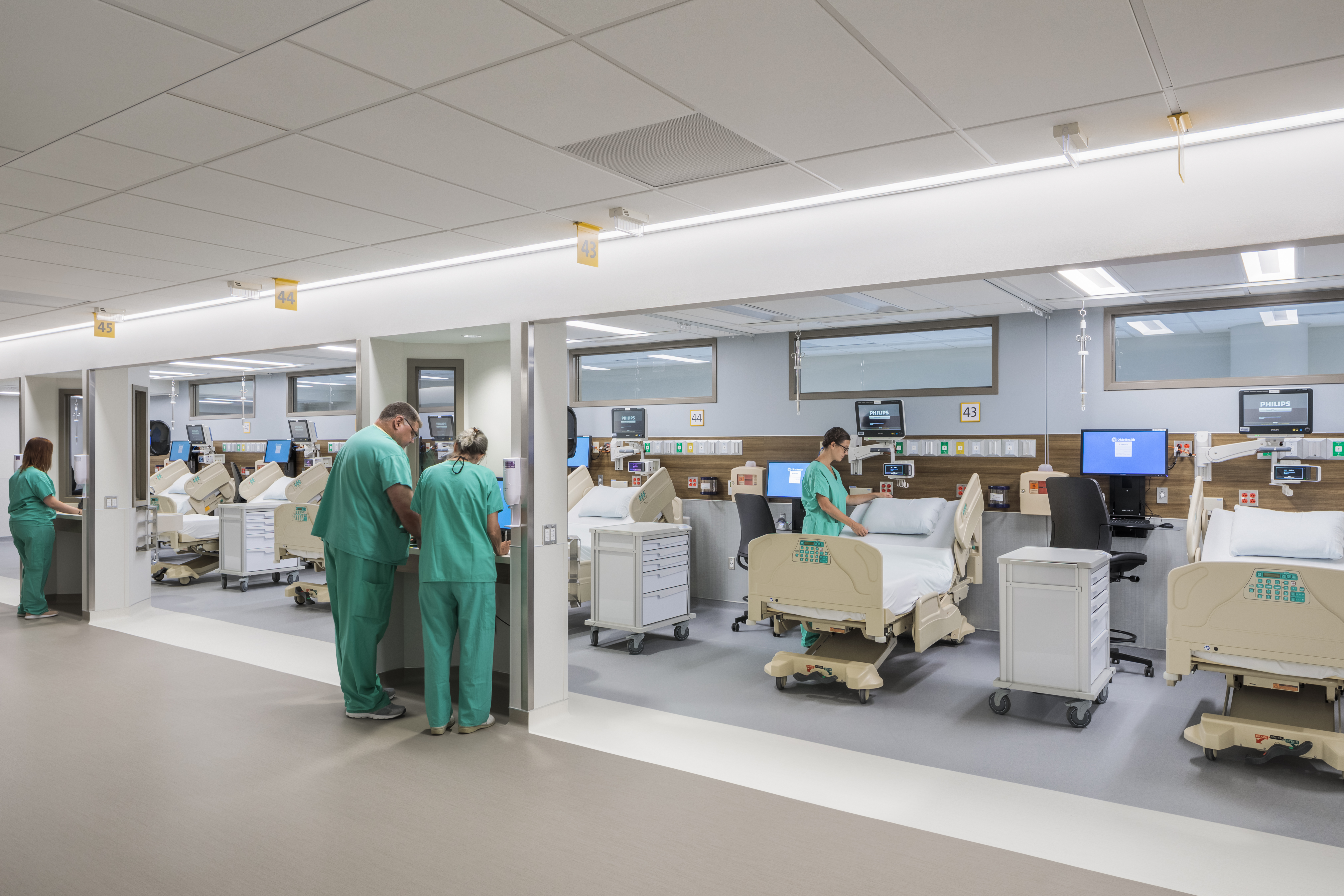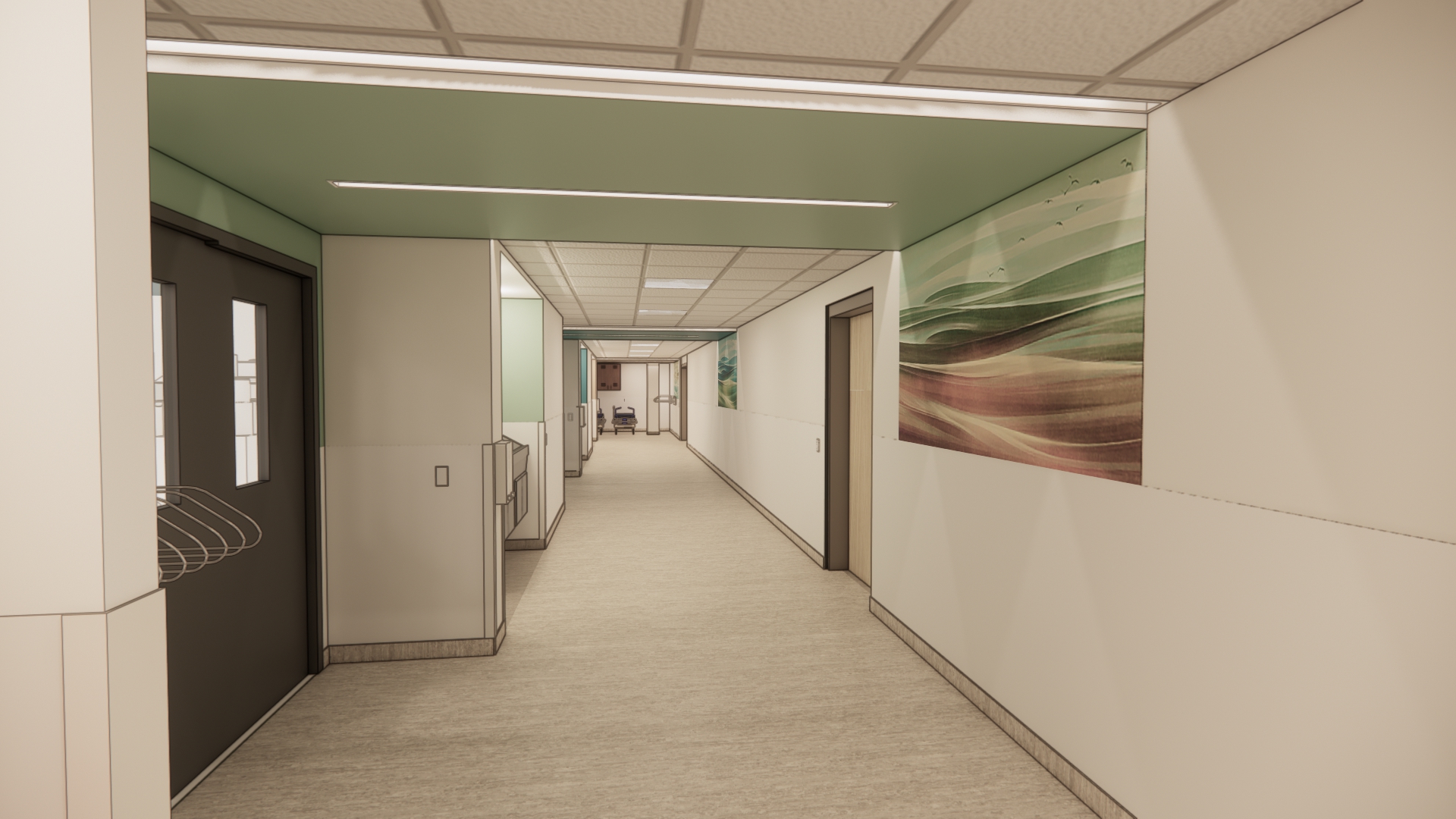They’re among the most complex spaces in a hospital. We believe there are three best practices that improve surgery rooms of every size and type.
By Angela Kolosky
AIA, ACHA, NCARB, LEED AP BD+C
Associate Principal, Healthcare Planning Market Leader
It’s not often you can look back at your firm’s experience and see all the choices that made for a successful surgery project, no matter the scale, all within one health system. Over 50+ years working with OhioHealth, we’ve overseen complex surgery renovation projects that range from rural community hospitals to their massive flagship facility in Columbus. Through those projects we’ve distilled our experiences into three essential components for a successful surgery renovation project: targeted benchmarking, efficiency and creativity in design, and tenacity is phasing and details. Here’s why they matter.
Targeted Benchmarking
Client: OhioHealth Riverside Methodist Hospital, Columbus, OH
Benchmarking is always an interesting component of successful planning – but it can come with trip ups if not appropriately applied. Surprisingly, benchmarks are often agnostic of the operations, structure, and patient demographics of a particular hospital, making it somewhat generic and disconnected from specific needs. We believe simulations are, and will always be, one of the most important tools in developing surgical-specific programs. They help make sure the right benchmarks are being applied.
Simulations allow users to visualize complex patient and staff flows, patterns, and potential disruptors using real-time variables that represent how the spaces are used. When DesignGroup was brought into the RMH surgery renovation, the program was almost 15,000 SF too large for the space available. Using industry standard benchmarks would have required 71 periop bays to support Riverside’s massive 22 operating rooms (3.24 bays per OR). So we used simulation to build operational clarity, confirm staffing models, and gain user consensus. The team was able to reduce down periop bays to 56 (2.8 per OR), saving the project 21% of the size (and making the project viable) and saving $2.3 million in construction costs (while still accommodating increased volumes for 10 years). Learn more in this case study.

Efficiency and Creativity in Design
Client: OhioHealth O’Bleness Hospital, Athens, OH
Working in community hospitals often means being creative. I’m not talking creativity with colors and styles of interiors, but more outside-the-box, big-picture thinking about space. At OhioHealth’s O’Bleness Hospital, doing just that was important to the project’s success. With a landlocked department, thinking of new ways to deliver care allowed the project to be right sized without adding more square feet.
Besides space, another hot commodity at community hospitals is the staff. To improve staffing and support space for the new renovation, the team moved from a traditional post anesthesia care unit-style recovery to converting the amply sized prep/recovery department to universal bays. By co-locating all recovery in one department, the team was able to improve staffing and free up valuable square footage for the operating rooms and their support space. Much like the Riverside project, the simulations revealed how the current space could handle the additional load of Phase 1 recovery. And the relocation allowed for an “empty space” to initiate the complex phasing.

Tenacity in Detail and Phasing
Client: OhioHealth Doctors Hospital, Columbus, OH
Like many hospitals, when Doctor’s Hospital went through its first modernization project, a top priority was keeping the department fully operational in place during renovation. The scope created 10 new operating rooms, a hybrid cardiac OR, 14 PACU, and 21 Pre/Post-Op patient holding bays and rooms. The key to success for this project was the phasing – a process that required constant attention to detail and a complete understanding of the existing conditions relating to architecture, structure, and mechanical infrastructure. Phasing of the project needed to keep the existing unit operational until new services could be drought online – without sacrificing improvements of the plan. Critical to this success was mapping personnel and patient flows to ensure operations and safety during construction. Just as important was mapping all infrastructure lines so construction would not take rooms offline downstream of the work. This was the linchpin in delivering the project successfully. Learn more in this case study.
No matter the size of a surgery renovation project, or any healthcare renovation project, success is highly dependent on tailoring approaches for specific client needs, being creative, and paying unyielding attention to detail.

Angela Kolosky, AIA, ACHA, NCARB, LEED AP BD+C | Associate Principal, Healthcare Planning Market Leader
As a Healthcare Planner, Angela uses her experience, client data, and national benchmarks to create solutions where design can create positive outcomes for patients and staff. She brings this thinking to every project and has a passion for creating impactful, positive spaces for a critical and vulnerable population. Angela is an ACHA board-certified architect and was named one of Healthcare Design’s Rising Stars in 2020. Angela speaks and writes nationally on healthcare planning topics for Healthcare Design and Healthcare Facilities Symposium and is responsible for leading healthcare planning across both of DesignGroup's offices. She’s also a founding member of the Ohio Chapter of Women in Healthcare where she advocates for the advancement of women in healthcare outside of the field of architecture.
